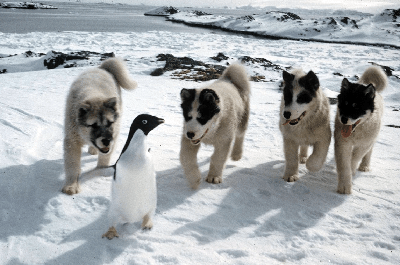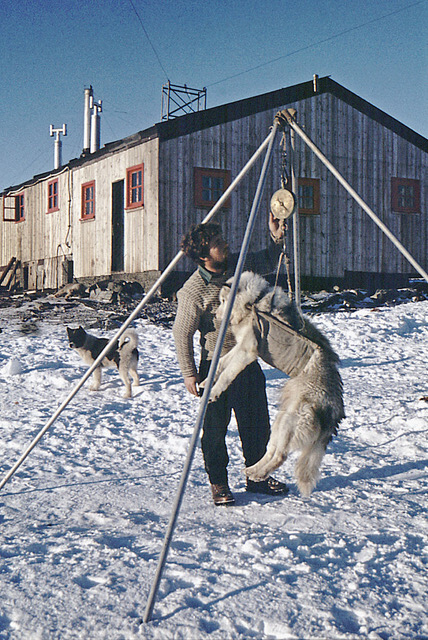In this Post
From the
Editor: The Art of Storytelling
Driving Dogs During the Golden Era of Antarctic Exploration
A Bridge of Ice
Book Review: Burnt Snow
“Arctic-adapted dogs emerged at the Pleistocene-Holocene transition”
QIMMEQ research paper podcast
New payment option: Ken MacRury’s master’s thesis
Driving Dogs During the Golden Era of Antarctic Exploration
A Bridge of Ice
Book Review: Burnt Snow
“Arctic-adapted dogs emerged at the Pleistocene-Holocene transition”
QIMMEQ research paper podcast
New payment option: Ken MacRury’s master’s thesis
Navigating This Site
Index of articles by subject
Index of Journal editions by
volume number
Index of PostScript editions by publication number
Search The Fan Hitch
Articles to download and print
Ordering Ken MacRury's Thesis
Our comprehensive list of resources
Defining the Inuit Dog
Talk to The Fan Hitch
Shop & Support Center
The Fan Hitch home page
Index of articles by subject
Index of Journal editions by
volume number
Index of PostScript editions by publication number
Search The Fan Hitch
Articles to download and print
Ordering Ken MacRury's Thesis
Our comprehensive list of resources
Defining the Inuit Dog
Talk to The Fan Hitch
Shop & Support Center
The Fan Hitch home page
Editor's/Publisher's
Statement
Editor: Sue Hamilton
Webmaster: Mark Hamilton
The Fan Hitch Website and
Publications of the Inuit Sled Dog– the
quarterly Journal (retired
in 2018) and PostScript – are dedicated to the aboriginal
landrace traditional Inuit Sled Dog as well as
related Inuit culture and traditions.
PostScript is
published intermittently as
material becomes available. Online access is
free at: https://thefanhitch.org.
PostScript welcomes your
letters, stories, comments and suggestions.
The editorial staff reserves the right to
edit submissions used for publication.
Contents of The Fan Hitch Website and its publications are protected by international copyright laws. No photo, drawing or text may be reproduced in any form without written consent. Webmasters please note: written consent is necessary before linking this site to yours! Please forward requests to Sue Hamilton, 55 Town Line Rd., Harwinton, Connecticut 06791, USA or mail@thefanhitch.org
Contents of The Fan Hitch Website and its publications are protected by international copyright laws. No photo, drawing or text may be reproduced in any form without written consent. Webmasters please note: written consent is necessary before linking this site to yours! Please forward requests to Sue Hamilton, 55 Town Line Rd., Harwinton, Connecticut 06791, USA or mail@thefanhitch.org

Who’s afraid of who? Photo: George McLeod
Driving Dogs During the Golden Era of Antarctic Exploration
by George McLeod
Although it may have been more than a half-century ago, memories of using dogs in Antarctica remain vibrant among the FIDS/British Antarctic Survey men who have “been there-done that.”. Read about this love affair in this collection of short stories, “Dogs In Rough Ice” by George McLeod, a legendary Fid who wintered at Anvers Island – 1957, Prospect Point – 1958, Hope Bay – 1962, Stonington – 1963 & 1967. He passed away at the age of 92 on July 4th, 2020.
The following is reproduced here with the kind permission of the author’s family and the Marguerite Bay website. S.G.H.
Scrummaging Dogs and Sea Ice
Three of us and three teams had been out of base for several days on bad sea ice. It was short]y after the lads from Horseshoe Island had gone missing, and we were all a bit nervous. Well, it happened. Ken and his team broke through into the water. We managed to drag him and the dogs out but it took us two hours, running all the way, before we reached firmer ice and were able to stop. By that time Ken’s legs and feet had really frozen up and he was in a bad way. The tent erected, we thawed him out and he immediately lost the skin off both legs and feet. In our haste we had just picketed the dogs, and all of a sudden we heart a big fight erupting outside.
A couple of us rushed outside and found the 30 dogs had pulled the pickets and were all scrummaging down. Once we got them sorted out, we found “Ruthie’s” stomach so torn that her insides were hanging out. I pushed everything back in, roughly stitched her up and got ready to head home.
That was a hell of a journey, still on poor sea ice and with three days back to base. I led out front with two dog teams (18 dogs), two sledges, two men – Ken could just about walk – and then Ruthie following the sorry caravan procession behind me. That night when we pitched camp, there was no sign of Ruthie. Ken was in agony and none of us could sleep. Suddenly the dogs began barking. I jumped out of my sleeping bag to investigate. It was Ruthie. dragging herself into camp. I thought I ought to put her out of her misery. But no, she’d made it this far, blood loss and all. We got back to base two days later and it took Ruthie almost another full day – but she made it. In time her belly healed and she was back to work as if nothing had happened.
Prancing Pup
One story I have is waking up and seeing in the distance one of my pups up amongst the crevasses, so nipping out of bed I called him back, but he just pranced around and stayed where he was. Putting skis on, I skied up thinking he’s scared of the holes. I got there to find one of his brothers in a crevasse and he would not leave him. After a rope rescue, we brought both pups down to their great delight. They were such good friends, we ran them together when they got older.

George McLeod is seen here weighing a BAS husky as
part of the dog’s health assessment.
Photo courtesy of the McLeod family
The temp was 37 deg F. Snow had turned to slush and we had to get home. In three days we ran 153 miles, through inches of water on the ice. The dogs were soaking wet and miserable, so bad in fact, they wouldn’t even fight.
When we reached Prince Gustav Channel it was all buckled ice and water to three feet deep. The dogs were wonderful, none of them balked. With me in the lead, crampons and ice axe and tied into the dog-trace, I’d sometimes be into my chest pulling, and the dogs would all swim to the solid ice beyond. We did this for two days, until forced ashore, the ice ahead had broken up and we could see water shadow on the icebergs up the Channel. You’d better believe I was good to my dogs after that. (written while at Hope Bay)
A Terrible Beating
John, Ben Hodges and I were sitting at the base of Sodomy Slope (Sodabread), in a screaming blizzard, with 3 dog teams, safely dug into the snow, we hoped. Ben and I with everything on and roped to John inside the tent, we crawled out to feed the dogs. God! What a mess, dead dogs on top of hard packed snow, most dogs buried underneath. If we dug them out they would freeze and if we left them under they would die.
Ben loved his dogs and took the time to bury two of his next to a rock buttress, while John and I downed tent, dug out our dogs and tottered back to Base.
It took us a day’s work to remove all the snow from inside the coats of the dogs. I’d never seen that before. The snow was packed inside the dogs thick coat, right to the skin and one had to push fingers right inside to get the snow out. You know how a husky’s tail curls, well, their tails hung straight down, solid with snow.
Ben lost two dogs, and John one. We took a terrible beating, yet in a couple of days, the dogs were back, bright eyed and bushy tailed.
Night Noise on the Spans
Ralph and I were up on Uranus Glacier, a hundred miles or so from the sea. It’s night time and everyone has settled down, when there’s a curious little bark from Signy my lead dog. I said “It’s just the dogs messing around”. I went outside to find a penguin peering at the dogs. I turned Signy loose and she quickly caught and killed the penguin, which Ralph and I cooked and ate, whilst Signy enjoyed what was left. A curious little tale, because what’s a penguin doing up at 1,000 feet anyway?
The Grip Show
Now watch George McLeod’s “grip show” (“gripping” pictures of derring-do, super-scenic, awe-inspiring pics = gripping) here to enjoy in his own words his recollections of life in Antarctica, which include descriptions and photographs about “his” dogs. This twenty-seven minute color video is a treasure. You will learn what became of the penguin in the header photo in this article.